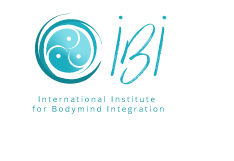— Bessel van der Kolk, MD
«Trauma victims cannot recover until they become familiar with and befriend the sensations in their bodies.»
How can PTSD develop?
Post-traumatic Stress Disorder (PTSD) can develop in someone after experiencing or witnessing an event that made them fear for their safety or someone else’s safety. Common traumatic events that can “trigger” PTSD include natural disasters (hurricanes, earthquakes, etc.), abuse, witness or victim of a crime, or car accidents.
After someone experiences a traumatic event, they may show some of the symptoms listed below. Symptoms can occur immediately after the trauma, or may be absent for the first days or weeks following the event.
SYMPTOMS OF PTSD ARE GENERALLY DIVIDED INTO THREE CATEGORIES:
“Reliving“: Re-experiencing the traumatic event in some way
- Recurring painful memories of the event
- Recurring dreams of the event
- Flashback episodes, where the event seems to happen again
- Physical reactions to situations reminiscent of the traumatic event
“Avoidance“: A conscious or unconscious desire to stay away from memories of the event
- Difficulty remembering important aspects of the traumatic event
- A lack of interest in activities that the person enjoyed
- Feelings of detachment
- The feeling of not having a future
- Emotional “numbness”, or the feeling of not caring about anything
- Decreased mood expression
- Stay away from places, people, or objects that are reminiscent of the event
“Arousal“: A sense of being “alert” to future dangers
- Irritability or tantrums
- Difficulty sleeping
- Concentration difficulties
- Exaggerated response to matters that trigger startle response
- Hyper-vigilance, or excessive awareness of potential threats
YOUR BODY TRIES TO MAKE SENSE OF THINGS
It is perfectly normal for someone to feel some or all of these things after a traumatic event. After all, it is your body that tries to make sense of something that does not normally happen. But when worries / fears or behavioral changes persist for more than a month, this is a sign of PTSD and a sign that it is time to seek help.
In the treatment of trauma, respectful body-oriented interventions in therapy are indispensable. A methodical attention to the body forms the basis on which cognition, emotion, physical experience and expression can come together. In addition to your story about your trauma, the following serve as starting points for processing and growth in our therapy: posture and motor skills as well as physical symptoms and complaints that indicate underlying traumatic experiences, psychological conflicts and unmet needs. Because of the systematic way in which the body is involved in psychotherapy, you can experience that your physical integrity is respected and that your own body can be trusted. “Just talking about it” will not suffice. In other words, the body as an angle in trauma therapy offers you the opportunity to work through unresolved emotional conflicts, fears and stress, by not only discussing them, but also making room for experiencing and expressing it in a physical way, you become reconnected with your inherent strength and you dare to be vulnerable again without losing yourself. Our approach is based on the assumption that we always see and experience the present through the lens of the past (Al Pesso, 1994)
Treatments for PTSD at IBI
The Institute for Bodymind Integration offers several services designed to treat children, adolescents, and adults suffering from PTSD. These treatments include:
- Individual Therapy: The focus of the therapy is on creating awareness of inner physical sensations, which are seen as the carriers of the traumatic memory. We also teach the client to learn specific skills that reduce concerns and stress associated with the traumatic event. It is helpful to learn these skills in a supportive environment where the client’s experience can be normalized.
- Family Therapy: Provide support and instruction for parents who want information on how to help their child work through anxiety and trauma.
Relaxation, Grounding and Body-Awareness: works by teaching specific anxiety management skills to the client. The client is made more aware of the inner processes that contribute to fear, and thus learns to better control these processes. - Group Therapy: In a short-term program, in a supportive atmosphere, patients are taught to emotionally regulate, apply self-calming techniques, and work with interpersonal relationships.
- Medication can sometimes help treat certain anxiety symptoms associated with PTSD when used in conjunction with other forms of therapy. However, medication is not always indicated in children under the age of 18. Consult your treating physician.
Did you like this article? Share it in:





